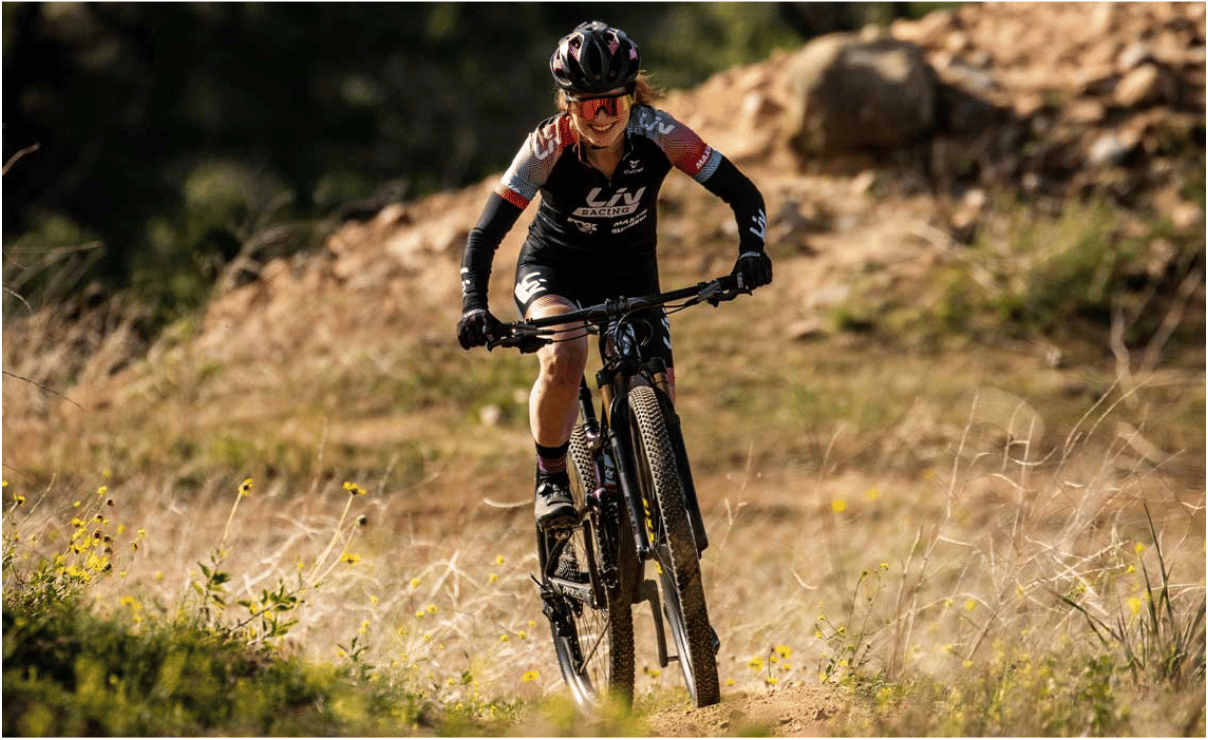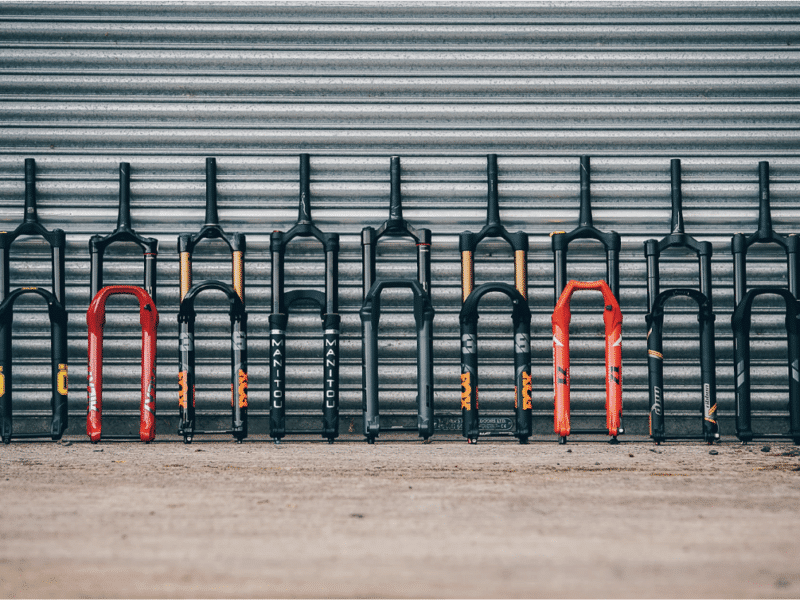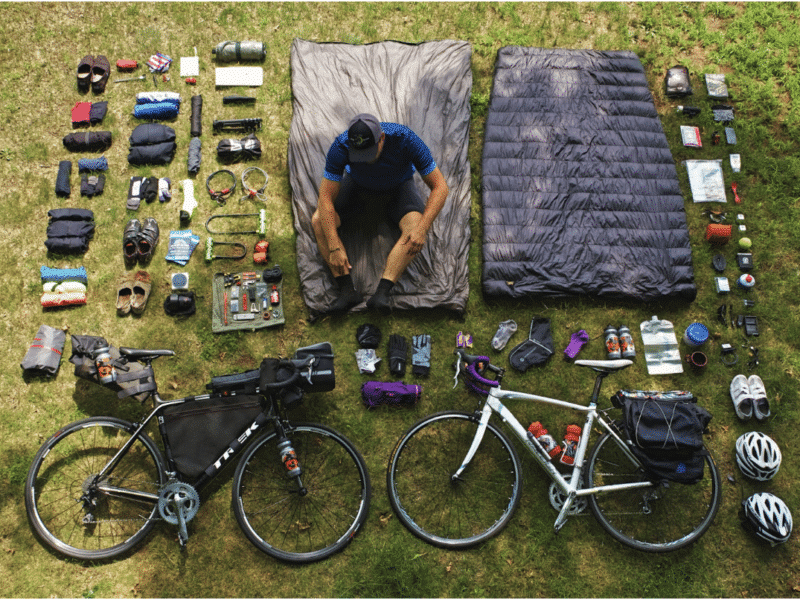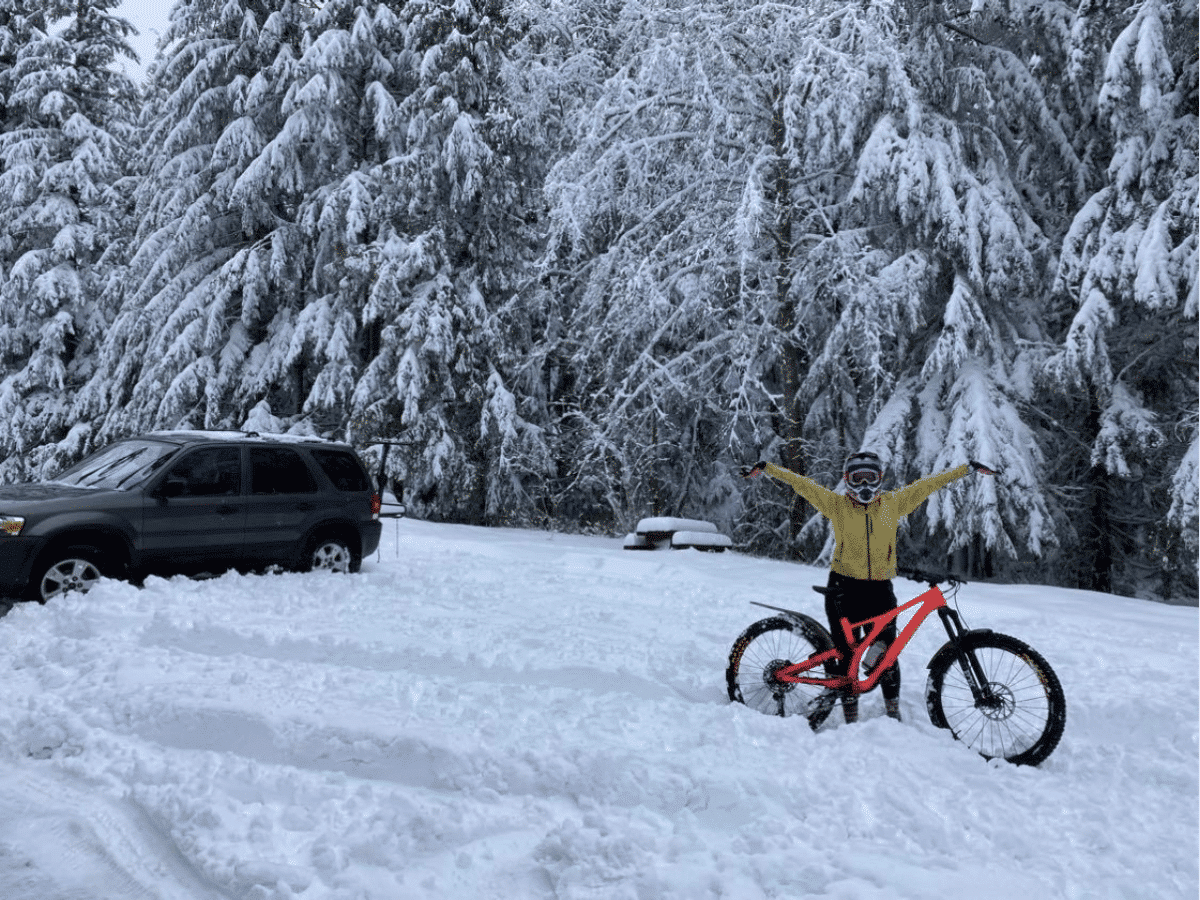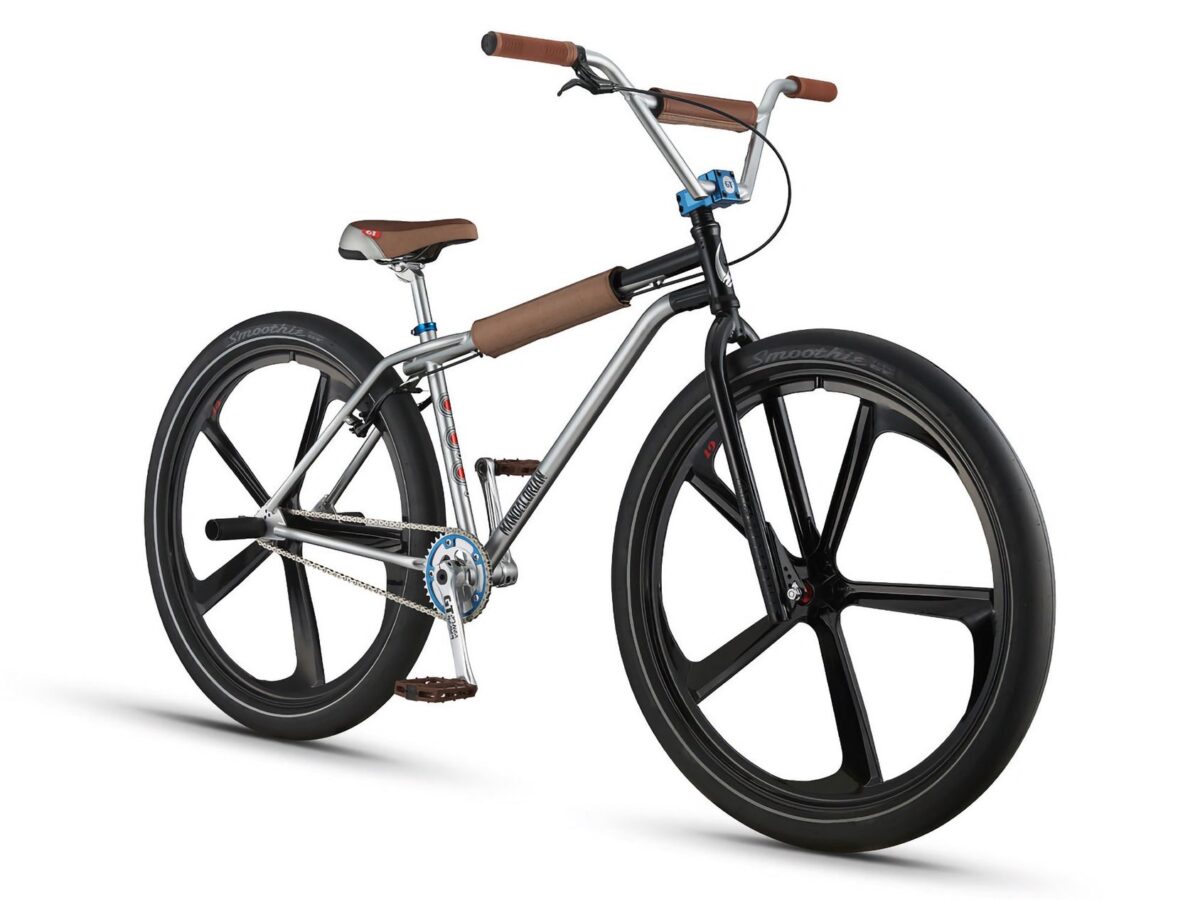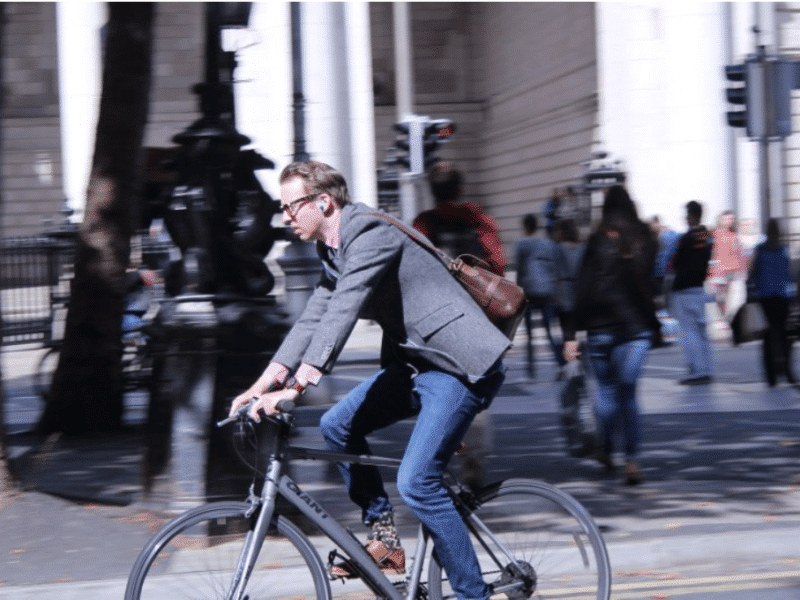The thing that basically every mountain bike rider has started off on are flats and that is just because they are much easier to use whilst you’re still learning and don’t cost anything extra. After some time some people continue to use flats but others actually move over to using cleats instead, especially if they are road cyclists.
So in this article, to make you more informed of your decision on whether or not you should continue on flat pedals or not, there are some pros and cons for both flat pedals and clipless pedals. Once going through these pros and cons you’ll be able to identify what you’ll need out of your pedals and which type will provide that for you, whether it be for mountain biking, road cycling, gravel riding or just regular back and forth commuting.
What exactly are the differences
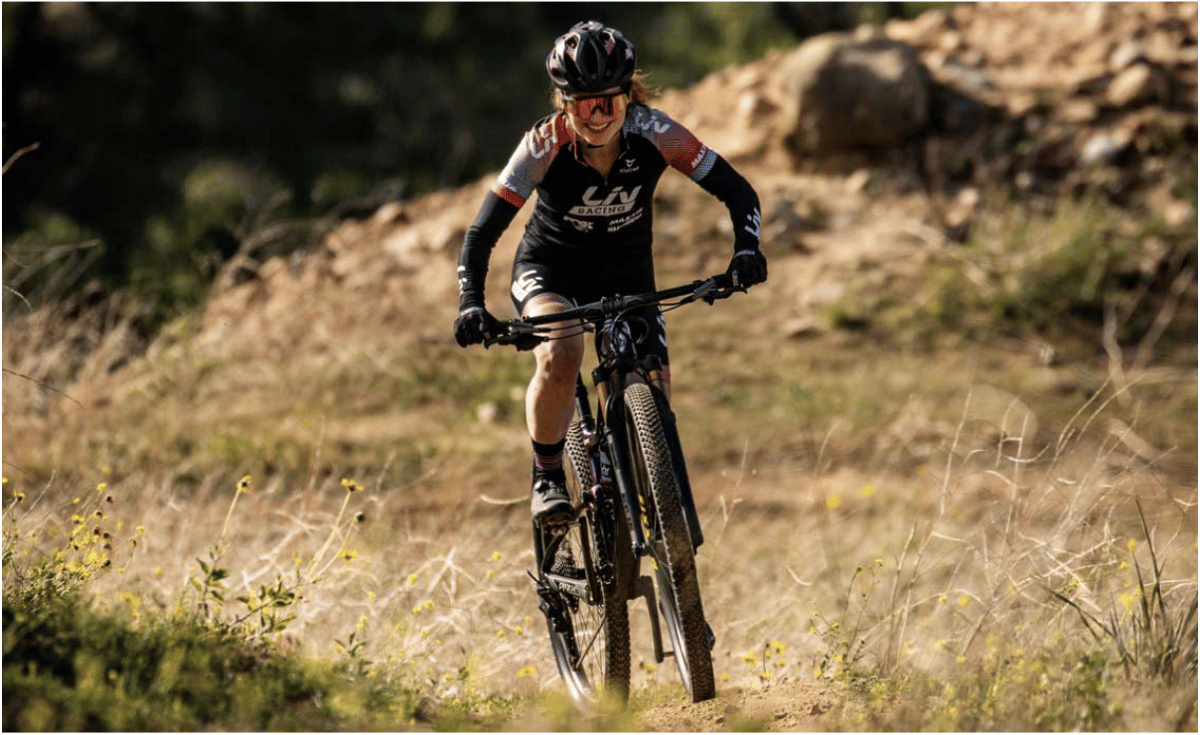
Before even jumping into whether or not one is better than the other it is important for you to understand exactly what each of these options are and what the differences are between them.
The fact that these types of pedals are called ‘clipless’ pedals does definitely confuse some people in the beginning since you do actually clip your shoes into them, in order to lock your feet in place, so some would think that they should be called clip-in pedals.
To understand why these pedals are called ‘clipless’ you’ll have to dive into the history of pedals. The name ‘clipless’ actually comes from the fact that in the beginning days of these pedals you’d actually remove the toe clips and straps, which would go over the top of your feet, which would originally hold your feet in place on your bike. So thus the name ‘clipless’ comes from them removing the original clips and straps that they used to wear in the past.
The first time we saw the appearance of clipless pedals actually affect the world of biking was in 1984 when a French brand, Look, released their first clipless pedals. This new found system was invented to replace the toe clips with what is called a cleat, which is screwed to the bottom of your shoe and locks into a locking mechanism built into the pedal. This new system provided a much more secure as well as comfortable connection for riders all over the world and it quickly became very popular and still is to this day.
To further have an understanding of these clipless pedals it is important to know that there are different types of clipless pedals, single-sided as well as double-sided clipless pedals, which you’ll have to take into consideration when choosing what type of clipless pedal you’d like to run on your bike. Right now, Shimano is the largest name in the clipless pedals industry, so for the best options and most reliable options it would be best to start with looking at what they have if your are considering buying.
Flat pedals
Pros
- Easy to use
- Quickly get your foot off of the pedals
- Less affected by mud and dirt
- Can easily adjust your foot placement
Cons
- Foot can easily slip off, especially in wet conditions
- Less maximum pedal power
Clipless pedals
Pros
- More pedal power
- Good foot placement the whole time
- Gives you a secure connection to your bike
Cons
- Harder to learn for newbies
- Cleats are difficult to walk in
Different Designs
The differences of clipless and flats don’t just stop at the fundamentals, there are actually a lot of differences when it comes to the physical design of both of these pedal types as well.
If you are someone who has opted to get flat pedals and are looking to buy a pair of good mountain biking ones then you have probably noticed that flat pedals, usually, have a much larger surface area than what clipless pedals do and on this larger surface area it actually has metal pins in order to help keep your shoes from slipping off. Then if you aren’t going to be using the pedals for aggressive mountain biking then there are other all-round designs for people just looking to commute on their bikes and these will normally have a smaller pedal body and less aggressive grip on them.
Then on the clipless side of things we have the double-sided clipless pedals which are designed to be used for mountain biking, these pedals also come with different sized platforms so it will be up to you to decide what size you like the best. You can get sizes that are so large that you won’t even need to have cleats on in order to ride with them but then you can also get others which are tiny and you won’t be able to ride with them unless you can clip your shoes into them.
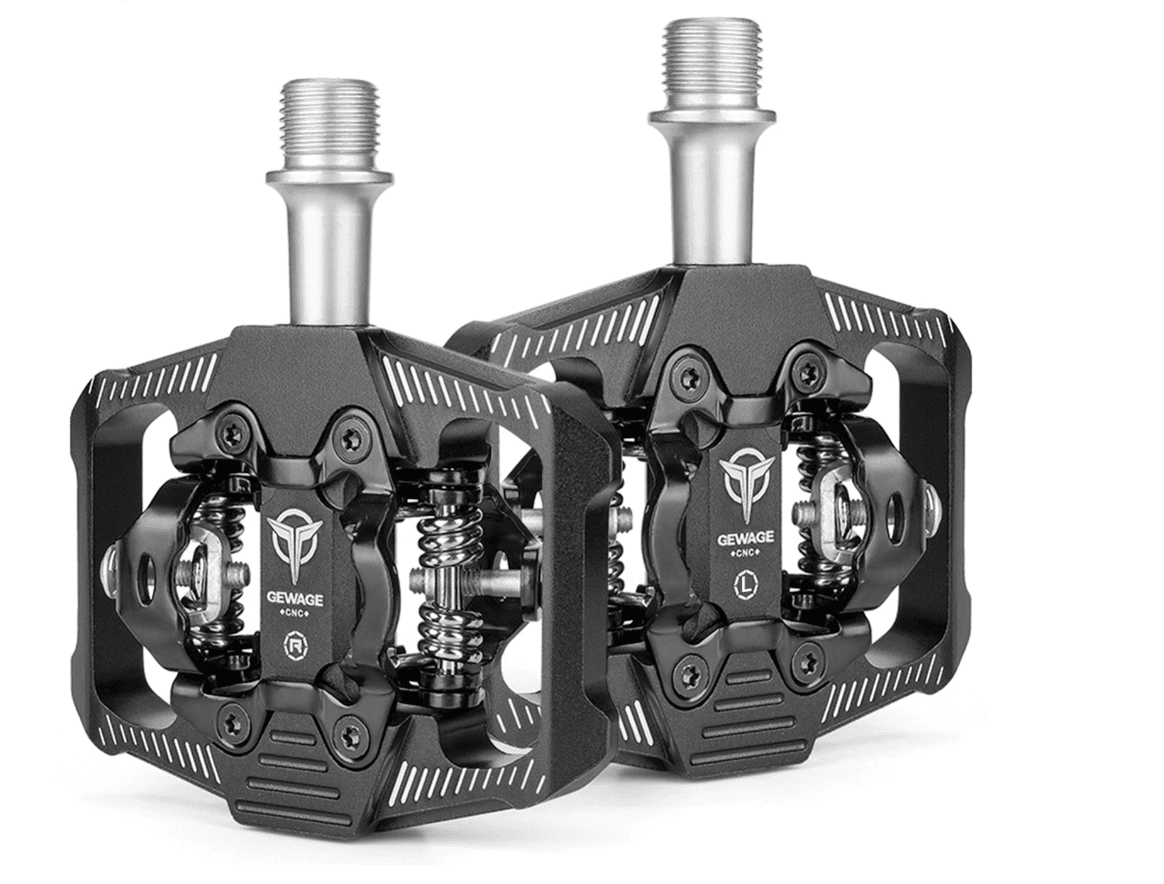
Then you get the single-sided clipless pedals, which are the pedals that are most popular amongst road cyclists because they have a much broader platform in order to give you more stability. Although they may have a larger platform they are still designed to have a minimal and compact design in order to save weight and make you the fastest cyclist on the road. These pedals, since they’re so small, are difficult to ride with if you are not wearing cleats so you’ll definitely want to own a pair of cycling shoes that are compatible with these pedals if you are thinking of purchasing this option.

How to set up clipless pedals
If you have a mountain bike or even a road bike that is equipped with a pair of flat pedals then you won’t have to worry about setting them up because you’ll be able to just place your shoes anywhere you feel is comfortable on your pedals. Clipless pedals on the other hand have obviously reduced how much you are able to move your foot around on the pedals so it is important that you know exactly how to set them up so that you get the best performance as well as comfort out of them, whilst you’re riding.
The main thing to watch out for is any uncomfort when you’re riding because if you feel any then it is an indication that you haven’t got them setup properly. If you don’t fix it and you continue to push through the pain then it can develop into knee pains, which you definitely don’t want because it could even stop you from being able to ride your bike.
One of the most common things that people don’t think about when riding with clipless pedals is their float, which is how much movement your cleat and clipless pedals allow. Try and find the right amount for you, you should be able to adjust this accordingly in most clipless pedals by changing the cleats you’re using or making other adjustments.
Are clipless pedals actually more effective
The simple answer to this question is that it depends.
Theoretically there is no difference at all in pedalling efficiency between these two pedals, for low intensity riding that is. So if you were to be in a pair of regular shoes, with flat pedals, riding a stationary bike there wouldn’t be a noticeable difference compared to if you would be clipped into that same bike.
However, if you are outdoors on your bike and have to accelerate as fast as possible then you’ll notice that if you are clipped into clipless pedals with cleats then you will have a lot more power than if you were in your regular shoes and on flat pedals. So if you are riding very hard and want to get as much pedalling power as possible then the best option for you would be to go for the clipless pedals and cycling shoes combo.
As a rider you will have to look beyond just the efficiency of your pedalling though. So let’s look at some of the reasons as to why you should use clipless or flat pedals for mountain biking, road cycling and just regular commuting.
For mountain biking
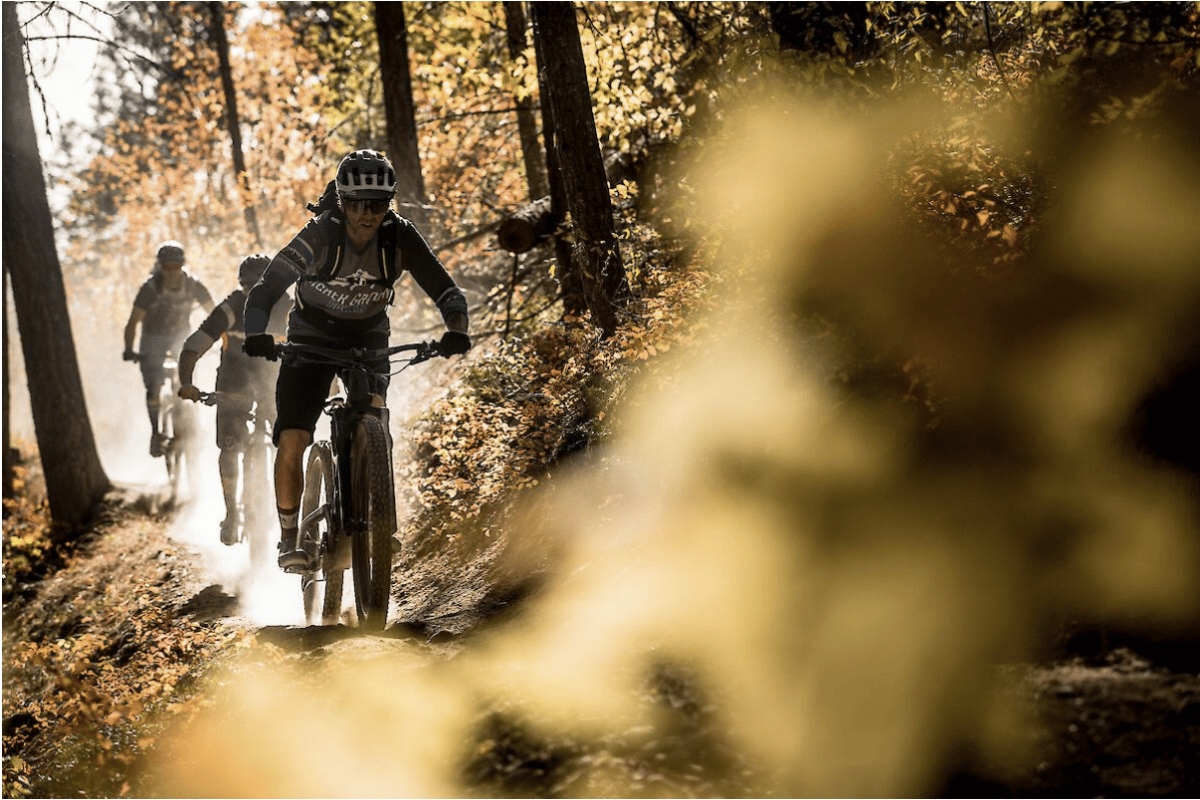
When you look at road cyclists you’ll notice that the majority of riders will be seen using clipless pedals but when it comes to mountain biking then there is more of a variety and mix of people preferring to use clipless pedals and flat pedals.
When you are riding in rough conditions or a rough environment like mud or when it is wet then you may find yourself needing to quickly be able to take a foot off of your pedals to help you keep your balance and this is definitely easier done if you are equipped with flat pedals. Also if your trail has jumps in it then it may be important to rock flat pedals in order to easily change your foot placement so that you can adjust your balance on the bike.
Flat pedals are also a good option for those looking to perfect their riding technique as you’ll actually learn how to control and move your bike to clear jumps or tough sections whereas if you have clipless pedals all you’ll have to do is pull up on your pedals and your bike will follow.
Then as we already know, using flat pedals do take away from our pedalling efficiency and will actually make it harder for riders to pedal through rough terrain, needing a bit more power, compared to if you were to use clipless pedals. In rough terrain it is especially common that your feet may get bumped off from your pedals and the pedal, with its metal screws on it, may then hit your shins, which if you haven’t experienced yet is extremely painful.
Then on the other side of the spectrum we have clipless pedals which odder the security of your foot staying on your pedals that the flats can’t, his security is very helpful especially on descents. Another thing that these clipless pedals are able to offer you is maximum power as well as the consistency of foot placement. However, even though you feel the security of being clipped in on a descent it can be a little uncomfortable on a rough descent as getting your feet off quickly is a bit more tricky than if you had flats.

Even Though the double-sided mountain bike pedals are specifically designed in a way to give you a lot of mud clearance they still tend to clog up with mud or dirt when you’re riding in really bad conditions. If your clipless pedals do ever get clogged try and clean them or get the worst of it out because it will affect the pedals engagement mechanism and affect your riding negatively.
There are a lot of disciplines within mountain biking and they all tend to vary in what type of pedals riders prefer. In cross-country, clipped pedals are a lot more dominant than flats but in other disciplines like downhill and trail riders prefer to ride with flats instead. The reason that clipless pedals are more popular cross-country is because you get more potential for a better power transfer when you’re clipped into your pedals compared to having flats.
One of the most important things that you will have to practise doing is clipping in and out of your clipless pedals so that in the event of an emergency you are able to clip out and put your foot on the ground, although this will never be as fast as if you’d have flat pedals. When you practise this over and over you’ll also develop muscle memory so it’ll feel like second nature when you clip in and out.
For road cycling
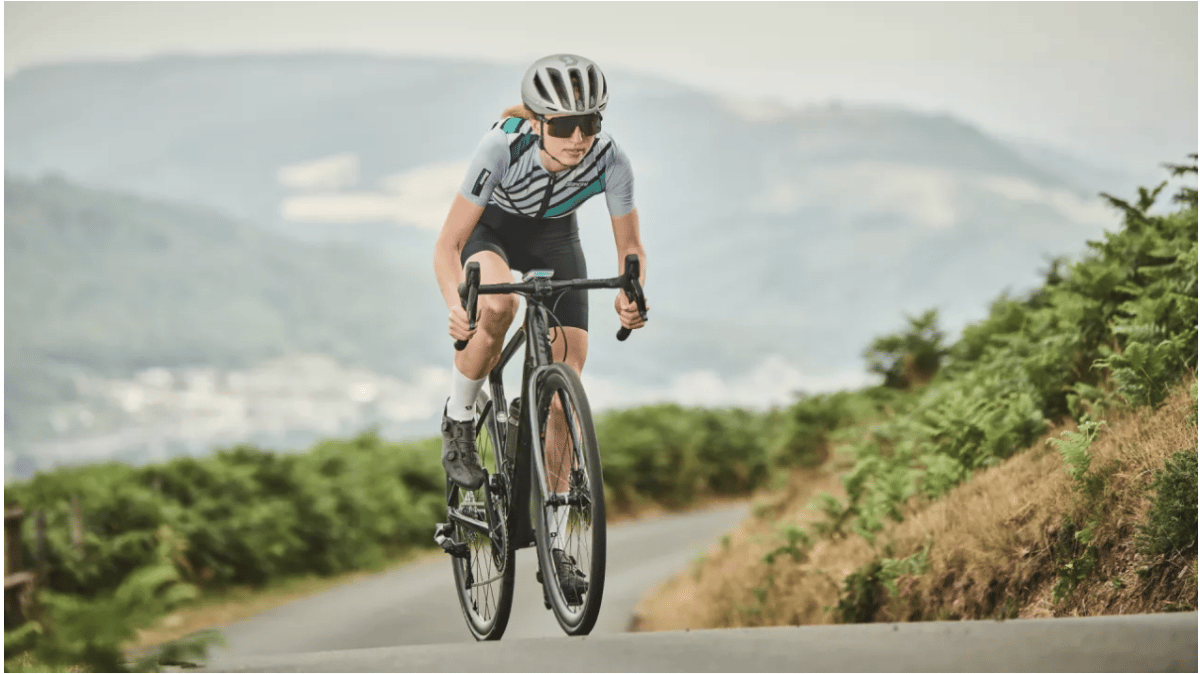
Most road cyclists you see nowadays on the road will be riding with single-sided pedals that have been specifically designed to be used on the roads.
Road cyclists prefer this pedal setup because if you pair them with stiff-soled road cycling specific shoes then it gives you a strong and direct connection to your bike from your feet, which you won’t be able to get if you used flat pedals. So because of these benefits all the professionals use them and since they do we see other amateurs use them as well because they tend to mimic what professionals do.
Although having clipless pedals may be a bit of a hassle in the beginning, since you aren’t so fast at clipping in and out of them, you won’t really find the need to be doing so that often and after a while it will become second nature to you. It is quite usual that in the beginning stages of switching to clipless pedals you will find yourself falling over after coming to a stop at the road but this is something that every rider experiences in the first few days.
You also don’t have to be too worried about damaging or wearing out the plastic cleats and the exposed cleat engenders because you won’t really find yourself walking so far or often in them unless you are stopping at a cafe after or during your bike rides.
If you are someone that is used to wearing double-sided pedals, because you maybe did mountain biking or cross country biking, then you don’t really have to be too stressed about switching over to single-sided pedals because there really isn’t that much of a difference. If you’re looking to be a touring cyclist, a gravel rider or a cyclocross racer then these could also be even a better option for you because they will be much more comfortable and easier to walk around in when you are off of your bike.
For beginners it may actually be more important to at least start off on a pair of flat pedals, when you’re still getting used to riding a road bike, so that you learn how to control the bike a lot better and don’t just rely on pulling up with your feet all the time. This will also be more forgiving as you will be able to easily put your foot down when you are falling, without the need to be an expert at clipping in and out of your bike. This way all your focus can be directed at learning exactly how to handle your bike.
For commuting
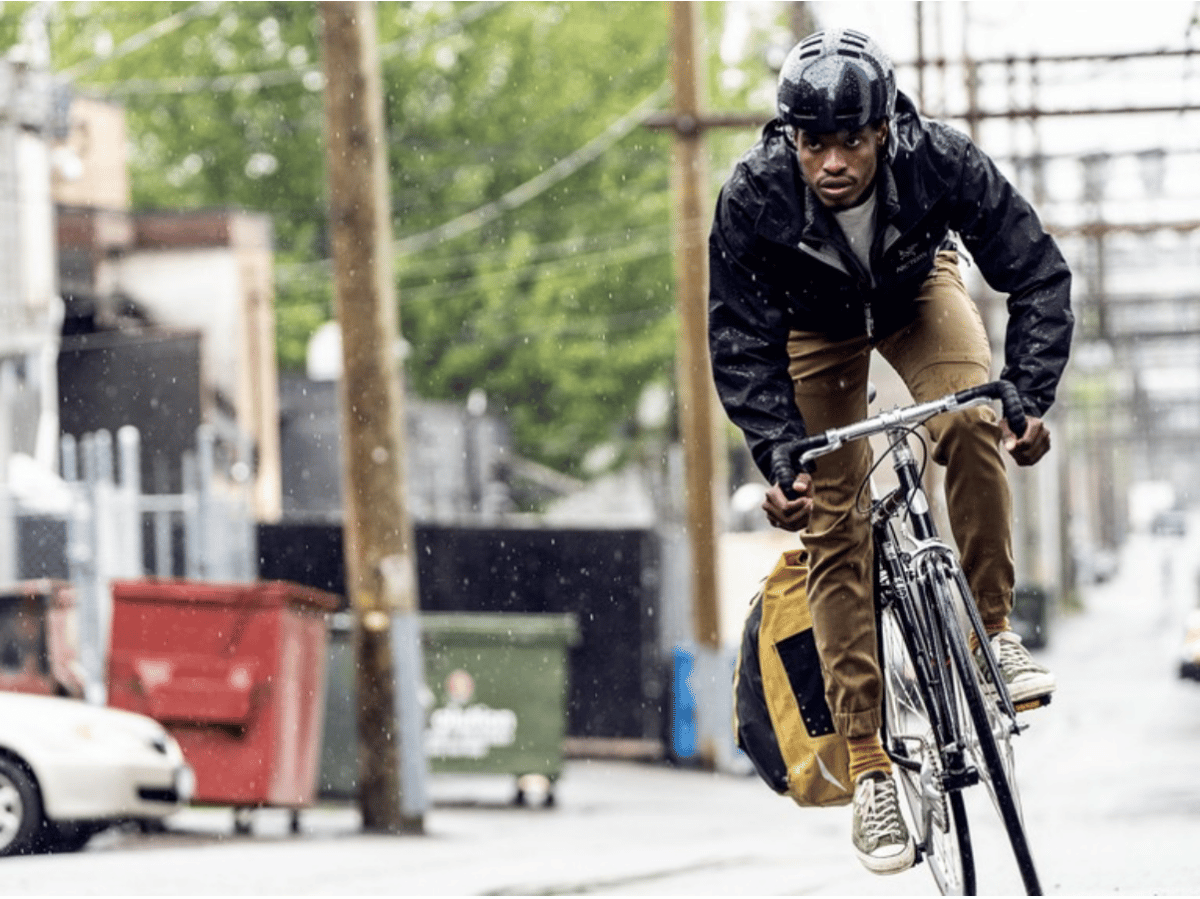
Commuting is a little different to road cycling because although both of these disciplines may be in urban areas road cyclists will tend to be cycling for much longer periods of times, further as well, whereas if you’re just using your bike to commute then your destination is more often than not quite close by. When you’re commuting there will also probably be a lot of starting and stopping due to traffic lights, junctions, pedestrians and just other vehicles out and about.
When you find yourself stopping so often then it is a little nicer to know that you will just be able to take your foot off of your pedals and put them on the ground, if you are equipped with flats that is. Then on the other hand you should still remember that accelerating with clipless pedals on your bike is going to be a lot easier than with your flats, so you will have to decide which is more important to you.
If you’re looking for an in between then double-sided clipless pedals may be your best bet because they’re easier to clip in than the single-sided pedals, since you are able to clip into either side of the pedals. This option also makes it easier to clip off since you’re able to tweak the pedals and make it require less force to clip out of than the single-sided road pedals require. Some systems even allow you to turn your foot in a certain or even multiple directions to disengage the pedal from your foot.
Then the biggest advantage that double-sided pedals have over single-sided clipless pedals is that you will be able to easily walk in the compatible shoes because the cleat, which is under the shoes, is small and normally tucked into the shoe’s sole itself. This is definitely extremely useful if you want to walk around with your shoes on before, during or after your bike ride without having to take off the shoes or have to walk in uncomfort.
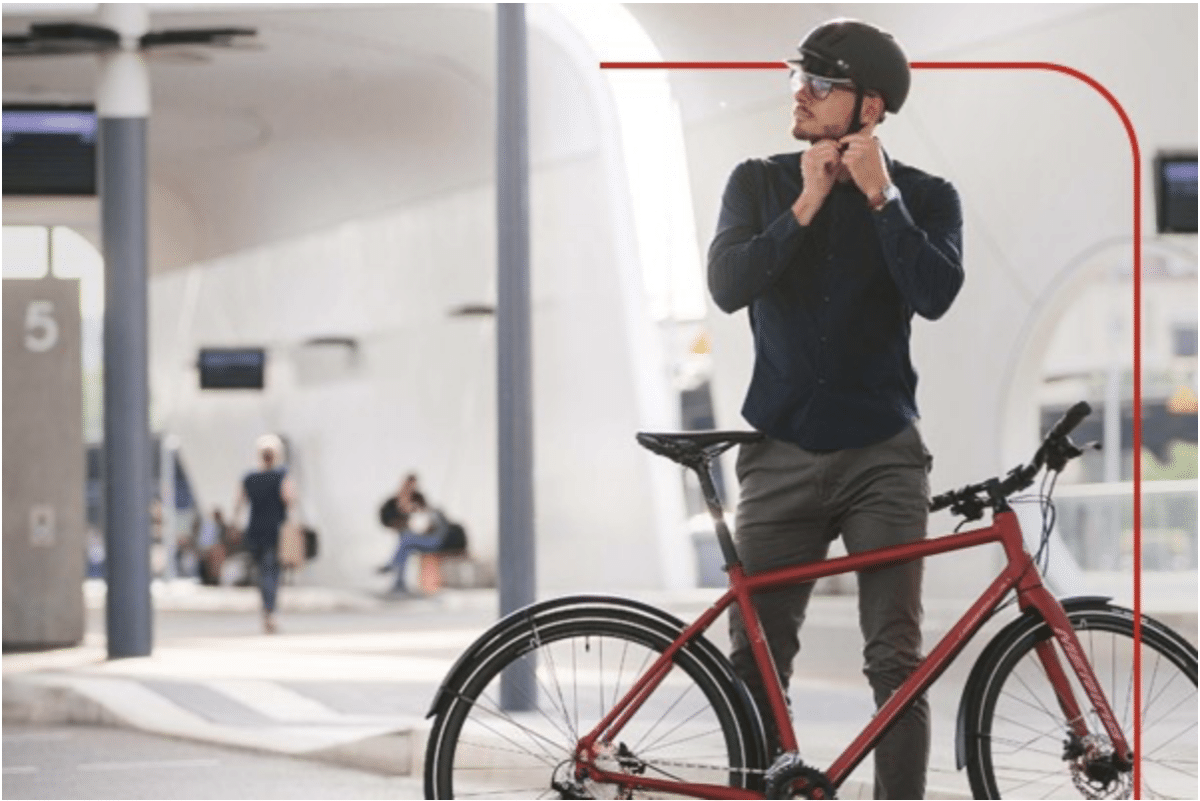
Then we come to the last option that you can opt for, when commuting on your bike, and that is to use flat pedals. Flat pedals are designed to have a large platform with pins, to help give your shoes some grip and essentially keep you on the bike. If you don’t opt to buy the more expensive flat pedals you could find yourself with a pair of pedals with a smooth surface, which means they’ll be especially slippery when wet and could cause your feet to slip off and then result in you losing your balance on the bike. So, when you are looking for a pair of flat pedals to fit onto your bike, it is important to look for a pair that will be able to give you enough grip between the base of the pedal and your shoes.
Another thing to keep in mind when you are looking to purchase a pair of flat pedals are the cage-type flat pedals. These types of pedals often come with very sharp edges and can actually damage your non-cycling shoes as it cuts into the base of them.
So if you are someone that commutes often then clipless pedals may be the best option for you and the bike-specific shoes that you’ll need to wear will actually keep your feet drier and warmer, when you are riding, this way you won’t have wet feet when you change back to your regular shoes.
Conclusion
So as you can see both flat pedals as well as clipless pedals have their own advantages and disadvantages. Below is a list of what each of them are ultimately good for but in the end it will be up to you to decide what you want out of your pedals and which ones you are more comfortable with using.

